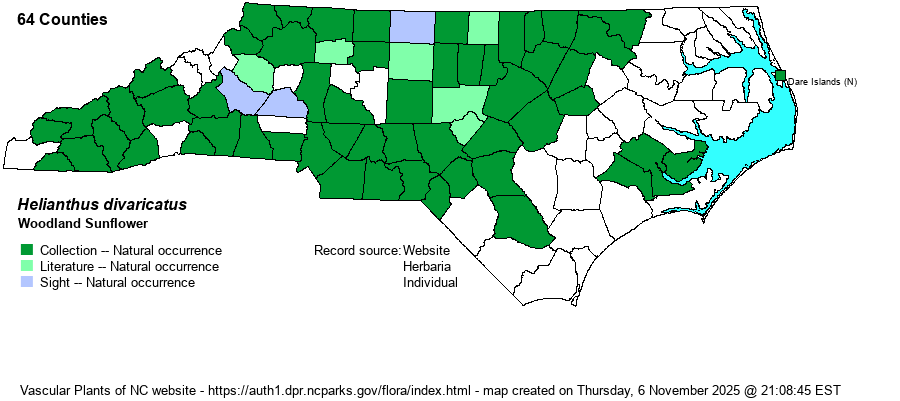| Author | L. | |
| Distribution | Mountains, Piedmont, Sandhills (local), and several places in the Coastal Plain with Piedmont-like affinities (Cape Fear River, Island Creek in Craven County). The Dare County collection came from a roadside on Roanoke Island.
Que. to Ont. and IA, south to northern FL, LA, and OK. | |
| Abundance | Fairly common to locally common in the Mountains and Piedmont; can be locally abundant. Rare to locally uncommon in the western Coastal Plain and Sandhills, and very rare in the eastern portions. Usually forms patches via long horizontal rhizomes. | |
| Habitat | Dry to mesic soils of a variety of open woodlands and forests, such as oak-hickory-dogwood, especially openings and clearings; bean dips in Longleaf Pine-Wiregrass uplands (Sandhills); roadbanks, borders, and powerline clearings. | |
| Phenology | Flowering and fruiting late June-August. | |
| Identification | The neatly-arranged pairs of long-triangular, rough-surfaced leaves (almost like sandpaper on the upper surface), coupled with the relatively small heads should clinch the identification. The leaves are nearly sessile and have only small serrations along the margins, almost looking entire at a distance. Plants mostly grow 1.5-3.5 feet tall and usually occur in dense patches or colonies. | |
| Taxonomic Comments | None
| |
| Other Common Name(s) | Rough Sunflower. Woodland Sunflower is a poor name, as it is no more a woodland species than a number of other sunflowers, because it mostly grows along forest borders like others. However, this is the most often used common name. | |
| State Rank | S5 | |
| Global Rank | G5 | |
| State Status | | |
| US Status | | |
| USACE-agcp | | |
| USACE-emp | | |

